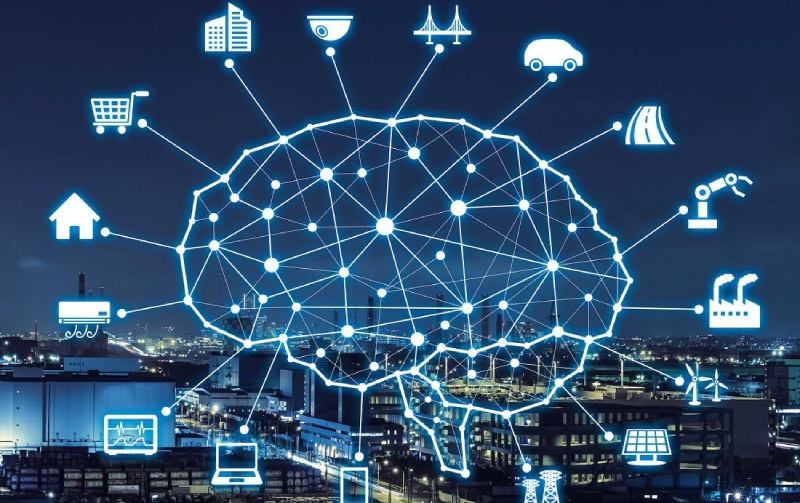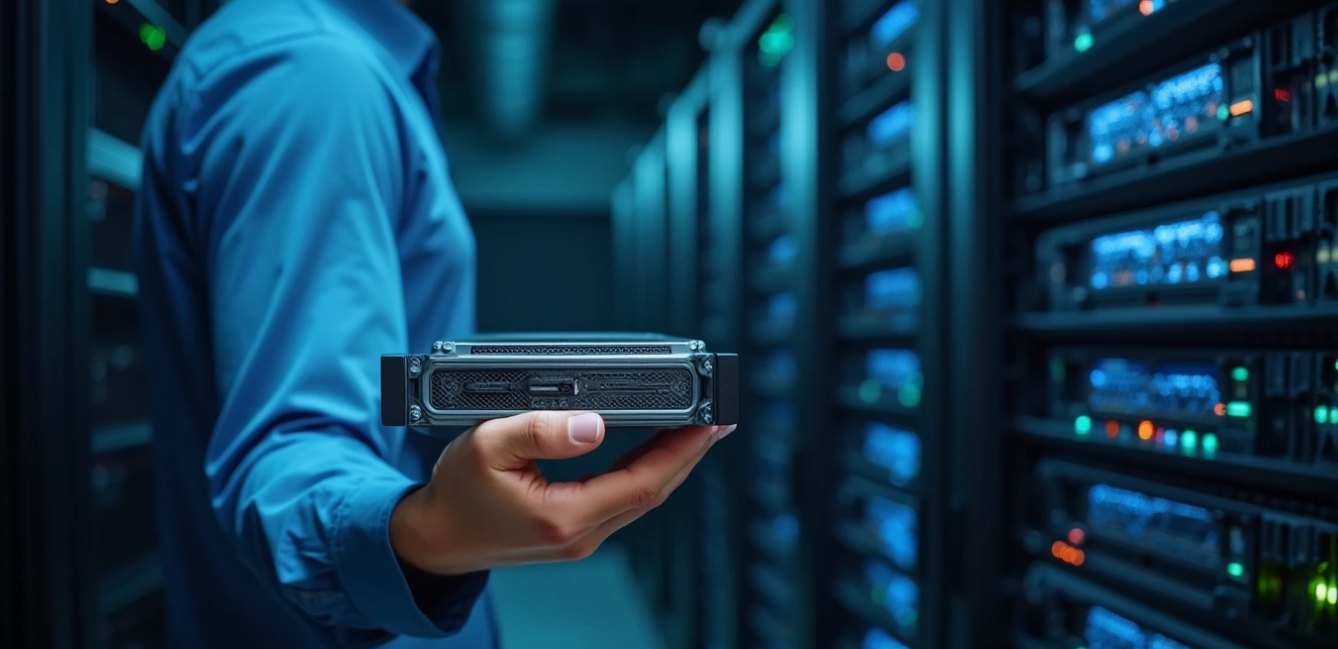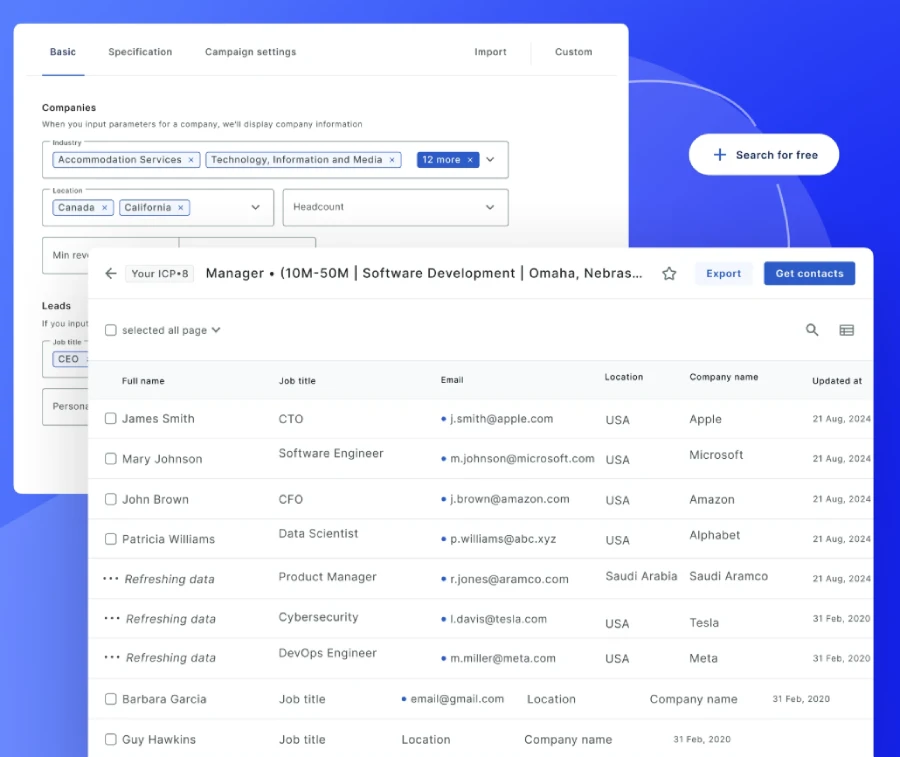
What Is The Internet Of Things (IoT)? Everything You Need To Know About The Internet Of Things.
In this modern world, most things become easy with the advancement of technology. You can look into any field and see how things have changed as compared to the past years. Scientists, as well as researchers, keep on working on various upcoming technologies that will surely make our lives quite easier and interesting up to a huge extent.
Among all the latest terms, The Internet of Things (IoT) is one of the most popular fields which comes into existence nowadays. IoT is the connectivity of physical objects that includes vehicles, devices, buildings, & electronics, along with the networks which allow them to interact, collect as well as exchange data. After years of enthusiasm, the IoT field has finally gained popularity and logical justification to be into use.
In addition to the discussion about IoT, you must be glad to know that mobile apps will be a point of connection for several IoT devices. It is estimated that from the year 2020 to 2030, the IoT devices will rise and grow up to 100 billion. Moreover, the improvement of the technology from the4G to 5G will also prove to be a miracle for the IoT.
With time, the scope, as well as the development of IoT, will surely be going to influence individuals & companies to look for IoT product solutions. The main point of using the IoT development tools is to make use of this new technology on several networks.
Thus, controlling different updates to check how app alterations may affect hardware responses. Now IOT apps are ruling out the industry, as well as the developers, with the help of various tools they are making them unique and scalable apps for various companies, industries, or organizations. You may approach the experienced developer to know more about IoT App Development.
IoT is a well-defined technology of the future which has already come into existence. The major possibilities of the IoT are in the field of health, agriculture, manufacturing, as well as in daily life. It is true that whether you are at work, home, on vacation, or simply doing some shopping, you cannot walk away from the Internet of Things.
This is because the Internet of Things is a system for connectivity which takes computer devices, digital technology, and people, and then binds them into a network of continuous streaming information.
Basic Tools Used In The IoT Apps
Here is the list of basic tools used in the IoT Apps that includes:
1. Eclipse IoT
When it comes to choosing the best IoT tool, Eclipse IoT usually encounters the mind of many people. Eclipse IoT is a well-known open-source platform that helps IoT developers & mobile app development companies to build up apps in Java. With the help of the Eclipse IoT, you can easily make IoT Devices, Gateways, & Cloud Platforms.
2. Arduino (IDE)
Arduino is popular for building interactive kits, microcontroller boards, and various other objects. This provides a complete IoT package that is rich with a lot of top example open-source libraries that support the IoT app development projects.
3. Home Assistant
This is one of the well-known tools which are aimed at developing IoT apps. It is based on the Python- coding system. Home Assistant software is basically used to support systems which are running on Python 3.
4. Kinomo Create
When there is a need to connect two devices without any information on JavaScript, then this tool is highly effective to use. It is quite handy and consists of everything that is mandatory for developing a small IoT App Development company. You can refer to any tutorial if you want to know more about this tool.
What Are The Main IoT Platforms?
1. IBM Watson IoT Platform
IBM Watson IoT platform is associated as one of the top-notch platforms when it comes to the IoT development system. It helps you collect data from various sources & devices, in real-time in order to get value and then find out the understanding for healthier business decisions. You can say that cloud-based Watson provided by IBM is one of the best analytical solutions for IoT, AI, & blockchain services.
2. Samsung Artik
It is also one of the renowned platforms launched by Samsung. It provides a wide variety of modules to quickly connect devices with the cloud software. With the help of the Samsung Artik platform, you can store data coming from linked devices and also combine this data.
3. ThingWorx
ThingWorx is a well-known and emerging IoT platform which is specially designed to speed up the digital transformation processes. It offers cost-effective solutions which can perfectly reduce the risk and minimize the development time.
4. Particle.Io
When it comes to IoT App Development, then Particle.io is associated as one of the best platforms that offer end-to-end IoT solutions for IoT hardware development. If you want to build & manage the IoT app, then Particle.io comes into existence as it provides robust as well as reliable features.
Important Steps That Enterprises Should Take To Handle IoT Risk
The main components of digital transformation programs are known as the Internet of Things. However, there are many digital risks as connected devices that typically produce significant types of data in big volumes are used, shared, as well as stored in various areas of a company’s IT infrastructure.
This sometimes leads to a severe effect across the entire risk landscape, which includes cybersecurity, &any third-party risk. Always remember that IoT security is not only restricted to device management. Here are the top three steps that every enterprise can take for IoT end-to-end security as follows:
1. Estimate & Prioritize The Risk Assessment
It is necessary that organizations, companies, or industries must prioritize risk assessments on the regular basis. Various activities include inclusion & removal of devices, discovering vulnerabilities, software updates, these are some of the factors which can change the risk profile with time.
In addition, there can also be a probability of third-party risks in case the IoT data is shared between the enterprise & external service providers. The number of guidelines will increase as digital transformation accelerates along with this the usage & adoption of IoT tools increase further.
2. Data Protection Is Important
IoT devices usually process sensitive data. Thus, it is subject to privacy controls that can be completely confined from the control systems. Thereby, it may lead to a major risk for many organizations and thus make them a target for cyber threats. Therefore, the data which is collected from connected devices is essential for the success of an IoT project. Hence it is necessary to keep the data safe along with securing the devices.
3. Regularly Monitoring Device Access
To maintain the overall operational security, it is essential to protect access to and from devices. This is critical for companies to authenticate the user identities in order to access the devices and then ensure their credentials have not been compromised or leaked in any way. Regular monitoring of the device, access can make many things easy in the future.
List Of Some IoT Security Threats To Prioritize
Some crucial IoT security concerns are hard to ignore that include IoT botnets, DNS threats, or physical device attacks. As the IoT provides a large attack surface & lack of security, hackers might have easily got more ways to enter the organization’s networks.
The IoT industry does not have a clear set of security standards for manufacturers or developers to build inconsistent security. In addition, the IT admins might find it challenging to keep track of & update devices. Here is the list of six IoT security threats to Prioritize as described below:
1. Major Concern Is IoT Botnets
The botnet attack is one of the main things which concerns many enterprises. After the major botnet attacks, all of the IoT developers, admins, and security officers can never forget to take the necessary measures to prevent this kind of attack in the future. Most of the Botnet orchestrators usually find all the IoT devices the main target because they have weak security configurations.
Mostly the attacker usually infects an IoT device using malware through an unprotected port and co-opt it into an IoT botnet that is used to begin massive cyberattacks. The main aim of the hackers is to find malicious code on the internet by using which they can easily detect susceptible machines before another code module signals devices to steal user information.
Keep in mind that the Botnet attack detection is not so easy, wherein the IT admins can take all the important steps to protect devices, which includes keeping an inventory of every device. It is always instructed that all organizations should follow the basic cybersecurity measures for the IoT devices in order to meet all the security standards & protocols before IT admins add them to the particular network. Network segmentation can separate IoT devices in order to secure the network from the compromised device.
2. Shadow IoT Devices
IT administrators cannot always be able to control what devices connect to their network. This creates an IoT security risk which is referred to as shadow IoT. All the devices with an IP address, like fitness trackers, digital assistants, or wireless printers may add personal convenience with work, but they do not necessarily need to meet an organization’s security standards.
IT admins cannot ensure the hardware & software basic security functionalities for malicious traffic without visibility into shadow IoT devices. Once the attacker accesses these devices, they can access sensitive information on the corporate network. Thus, it is important that IT admins can put policies in front to limit the risk of shadow IoT.
The admins must have the inventory of all connected devices. They can use the IP address management tools or other powerful tools to track any new connections, thus isolating unfamiliar devices when required. To get better IoT Solutions, you can connect with experienced professionals for guidance.
3. Sending Information Without Encryption
It is necessary to avoid sending any information without encryption. This is because, without it, communications between the devices are not secure which may create hassle in the future.
Always keep in mind that everything should be encrypted. It should be done with approved encryption algorithms, so that when any data leaves the device and goes to the server, then any other access point in a home is protected from unauthorized access & modification. For the IoT devices communicating over wireless technologies, it is necessary to encrypt app data within the network tunnel. Sending Information with encryption is useful in mitigating security issues.
4. IoT Ransomware
With the increase in the number of unsecured devices connected to corporate networks, the IoT ransomware attacks are also rising. The attackers infect the devices with malware in order to turn them into botnets that search for valid credentials in device firmware. In order words, it may help them to enter the network.
If the network access is to be done through the IoT device, then the attackers can move the data to the cloud and may threaten you to keep, delete or make the data public if not paid. Sometimes the situation can be arising that the amount of payments that hackers ask from an organization are not sufficient in order to get all its data back. Then the ransomware automatically deletes files without any fear. Ransomware is the critical part which can affect businesses or organizations up to a great extent.
The main point which IT admins can take into account is to prevent ransomware attacks such as assessment of the device vulnerabilities before deployment, disablement of unrequired services, take the regular data backups, network segmentation & use the network monitoring tools.
5. IoT Physical Security
Though it may seem unlikely that hackers may physically access the IoT device. It is important to keep in mind that all the IT admins must not ignore the possibility that hackers can physically access the IoT device when admins plan an IoT security strategy. The main focus of the hackers is to enter the network anyhow. They can easily steal devices, open them up and then access the inner circuits or ports to break into the network. The IT admins must only allow authorized as well as authenticated device access.
To keep in mind the physical security measures, most organizations should place devices in a tamper-resistant case and then remove any device information that manufacturers might include on the parts, such as model numbers or passwords.
6. DNS Threats
Several organizations use IoT to collect data from older machines that were not designed with recent security specifications or standards. If the organizations combine the legacy devices with IoT, this can expose the network to older device vulnerabilities. You must know that the IoT device connections usually rely on DNS. The attackers or hackers make use of the DNS vulnerabilities in DDoS attacks & DNS tunneling to fetch data.
IT admins may ensure that the DNS vulnerabilities do not become a risk to IoT security with DNSSEC. These types of specifications may secure DNS via digital signatures which ensures that the data is accurate as well as unmodified. IT admins can use the multiple DNS services for continuity as well as for the additional security layer.
IoT Security Trends In The Pandemic COVID-19
The present phase of COVID-19 has led to a rise in cyberattacks. This in turn led to a rise in the need for IoT & IoT security adoption. Finally, we have reached the era of an Internet of Things ecosystem, with connected devices deployed in the homes, workplace, & public places.
With the rise of cyber-attacks, there is an immediate need for cybersecurity. As the threats from criminal and rival nations evolve, defensive strategies must be put forward in place to protect the IoT systems.
It is strongly believed that the industrial markets will continue to drive the IoT demand, but growth in the communications & medical fields will get accelerated. Overall, you can say that there are only a few markets which are projected to stay strong amid COVID-19, wherein IoT security is one of them. Due to COVID-19, the security trends have been accelerated. In other words, there has been a rise in cyberattacks that has increased the importance of IoT security.
If you want to secure an IoT infrastructure, then you must require an in-depth strategy. It includes securing cloud data, data devices, any device, or any system connected with a network. In addition, you must have the potential to reveal personal information from cybercriminals. Therefore, it is necessary to ensure the high-level security of the IoT network of devices.
Final Words:
Presently, we are living in a digital world, most of the people are looking for options which can make their life easier. The rising smart technologies make anything, and everything easier day by day. As there is an exponential expansion in IoT devices, it has been estimated that IoT will surely become a crucial technology in the upcoming future.
As IoT Technology is itself the greatest blessing for everyone. Hopefully, all the above-mentioned information about the latest trends in the IoT will blow your mind. Nowadays, the top tools & platforms help to make the development process quite easier for various IoT devices.
Make use of the innovative tools, developers, you can get the apps ahead. Moreover, you can connect with the best developers who have ranked at the top as an IoT App Development company. Discuss all the business requirements with them openly. The expert team of developers will surely help you to create a fully functional app in the minimum possible time.

Tech-Savvy Tips for Enhancing Your Digital Infrastructure

Balancing Business Leadership and Travel: Tips for Success







